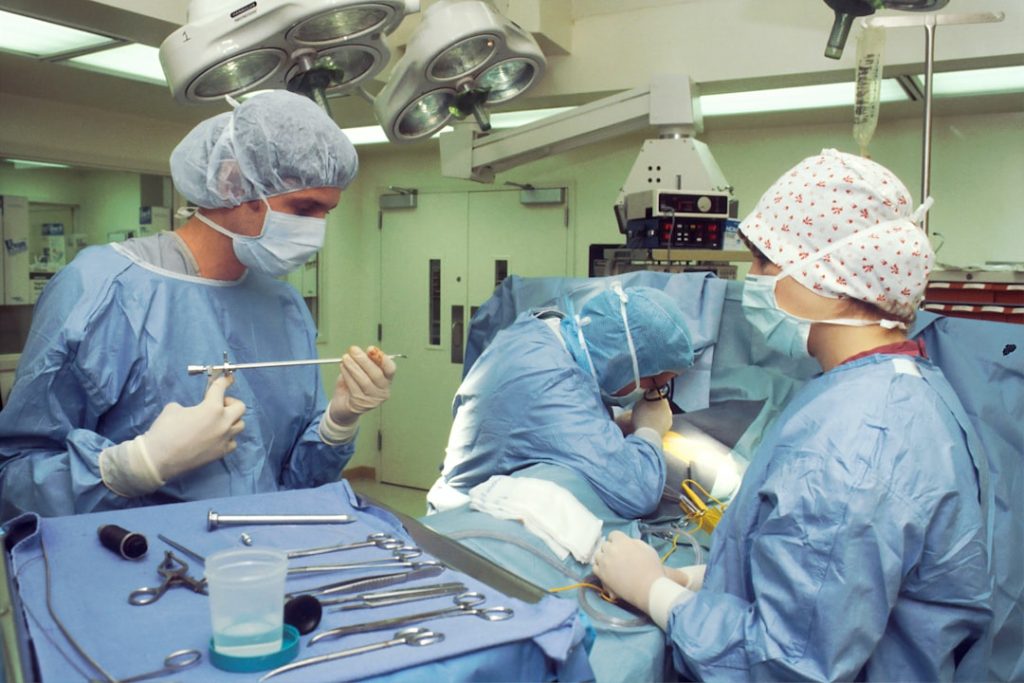Spaying pets, both cats and dogs, provides numerous benefits for the animals and society. This surgical procedure prevents unwanted pregnancies, reducing the population of homeless animals in shelters and on streets. Consequently, it eases the strain on animal welfare organizations and decreases the number of animals euthanized due to overpopulation.
Spayed pets experience behavioral and health improvements. They are less likely to roam or display aggression, and their risk of developing certain health issues, such as uterine infections and specific types of cancer, is reduced. These factors contribute to a longer, healthier life for spayed animals.
The practice of spaying pets has a positive impact on community animal populations, promoting a more balanced and sustainable ecosystem. By preventing unwanted litters, spaying helps manage the number of stray animals, which can lead to improved public health and safety. In summary, spaying offers multiple advantages for individual pets, their owners, and the broader community.
It enhances animal welfare, reduces the burden on shelters, and contributes to a more responsible approach to pet ownership and population control.
Key Takeaways
- Spaying your pet can prevent certain health issues and behavioral problems, and can also help control the pet population.
- Spaying can significantly reduce the number of homeless pets and overcrowded animal shelters.
- Spaying can reduce the risk of certain cancers and infections in female pets, and can also prevent unwanted litters.
- After spaying, your pet may experience some discomfort and require a few days of rest and recovery.
- The cost of spaying your pet is worth it in terms of preventing health issues, reducing overpopulation, and being a responsible pet owner.
The Impact of Spaying on Pet Overpopulation
The Consequences of Pet Overpopulation
Every year, millions of animals end up in shelters, and many are euthanized due to lack of space and resources. This is a tragic reality that can be prevented by taking proactive measures.
The Role of Spaying in Preventing Pet Overpopulation
By spaying your pet, you are taking an active role in preventing the birth of unwanted litters, which can contribute to the overpopulation problem. Spaying not only prevents the birth of unwanted litters but also has long-term effects on the overall population of animals in your community.
The Positive Impact of Spaying on Animal Welfare
By reducing the number of homeless animals, spaying can help alleviate the burden on animal shelters and rescue organizations, allowing them to focus their resources on providing care and finding homes for animals in need. Ultimately, spaying makes a positive impact on animal welfare, and it is a crucial step in addressing the pet overpopulation crisis.
Health Benefits of Spaying for Your Pet

In addition to preventing unwanted litters and contributing to the reduction of pet overpopulation, spaying your pet can also have significant health benefits for them. Female pets that are spayed have a reduced risk of developing certain health issues, such as uterine infections and certain types of cancer. Spaying your pet before their first heat cycle can further reduce their risk of developing these health problems.
Additionally, spayed pets are less likely to exhibit certain behavioral issues, such as roaming and aggression. This can help keep them safe from potential dangers, such as traffic accidents and fights with other animals. Overall, spaying your pet can lead to a longer and healthier life for them.
Spaying your pet before their first heat cycle can further reduce their risk of developing these health problems. Additionally, spayed pets are less likely to exhibit certain behavioral issues, such as roaming and aggression. This can help keep them safe from potential dangers, such as traffic accidents and fights with other animals.
Overall, spaying your pet can lead to a longer and healthier life for them. In addition to preventing unwanted litters and contributing to the reduction of pet overpopulation, spaying your pet can also have significant health benefits for them. Female pets that are spayed have a reduced risk of developing certain health issues, such as uterine infections and certain types of cancer.
Spaying your pet before their first heat cycle can further reduce their risk of developing these health problems.
Spaying Your Pet: What to Expect
| Topic | Details |
|---|---|
| Procedure | Surgical sterilization to prevent pet from reproducing |
| Age | Usually done around 6 months old |
| Preparation | Fasting before surgery, no food or water |
| Recovery | Rest for a few days, prevent licking or chewing stitches |
| Benefits | Prevents overpopulation, reduces risk of certain diseases |
If you’ve made the decision to spay your pet, it’s important to know what to expect before, during, and after the procedure. Before the surgery, your veterinarian will likely conduct a physical examination and may run some tests to ensure that your pet is healthy enough for the procedure. They will also provide you with instructions on how to prepare your pet for surgery, such as withholding food and water for a certain period of time before the procedure.
During the surgery, your pet will be placed under general anesthesia to ensure they are comfortable and pain-free throughout the procedure. The veterinarian will then make an incision in your pet’s abdomen to remove their reproductive organs. After the surgery, your pet will need some time to recover before they can go home.
Your veterinarian will provide you with instructions on how to care for your pet during their recovery period, including how to manage any pain or discomfort they may experience. Before the surgery, your veterinarian will likely conduct a physical examination and may run some tests to ensure that your pet is healthy enough for the procedure. They will also provide you with instructions on how to prepare your pet for surgery, such as withholding food and water for a certain period of time before the procedure.
During the surgery, your pet will be placed under general anesthesia to ensure they are comfortable and pain-free throughout the procedure. The veterinarian will then make an incision in your pet’s abdomen to remove their reproductive organs. After the surgery, your pet will need some time to recover before they can go home.
Your veterinarian will provide you with instructions on how to care for your pet during their recovery period, including how to manage any pain or discomfort they may experience.
The Cost of Spaying Your Pet: Is it Worth it?
The cost of spaying your pet can vary depending on factors such as your location, the size and breed of your pet, and whether they have any pre-existing health conditions that may require additional care during the procedure. While there is an upfront cost associated with spaying your pet, it’s important to consider the long-term benefits and potential cost savings that come with the procedure. By spaying your pet, you can help prevent costly health issues such as uterine infections and certain types of cancer that may require expensive medical treatment down the line.
Additionally, by preventing unwanted litters, you can avoid the costs associated with caring for and finding homes for multiple puppies or kittens. When weighing the cost of spaying against the potential long-term benefits for your pet’s health and well-being, as well as the positive impact on animal welfare in your community, it’s clear that spaying is a worthwhile investment. While there is an upfront cost associated with spaying your pet, it’s important to consider the long-term benefits and potential cost savings that come with the procedure.
By spaying your pet, you can help prevent costly health issues such as uterine infections and certain types of cancer that may require expensive medical treatment down the line. Additionally, by preventing unwanted litters, you can avoid the costs associated with caring for and finding homes for multiple puppies or kittens. When weighing the cost of spaying against the potential long-term benefits for your pet’s health and well-being, as well as the positive impact on animal welfare in your community, it’s clear that spaying is a worthwhile investment.
Spaying Your Pet: A Responsible Decision for Pet Owners

Reducing Pet Overpopulation
By spaying your pet, you are taking an active role in preventing unwanted litters, which in turn helps reduce pet overpopulation and alleviates the burden on animal shelters and rescue organizations. This can lead to a more balanced and sustainable animal population in your community, reducing the number of animals euthanized each year due to lack of resources and space in shelters.
Preventing Health Issues
Spaying your pet can also help prevent certain health issues that may arise if they were left intact. This can lead to a longer and healthier life for your pet, while also potentially saving you money on costly medical treatments down the line.
Creating a Better Future for Animals
By spaying your pet, you are contributing to a better future for animals in your community. You are helping to create a more balanced and sustainable animal population, reducing the number of animals in need of rescue and care, and promoting a culture of responsibility and compassion towards animals.
Spaying Your Pet: Making a Positive Impact on Animal Welfare
Spaying your pet is not only a responsible decision for their health and well-being but also for animal welfare in general. By preventing unwanted litters through spaying, you are taking an active role in reducing pet overpopulation and alleviating the burden on animal shelters and rescue organizations. This can help create a more balanced and sustainable animal population in your community while also reducing the number of animals euthanized each year due to lack of resources and space in shelters.
Additionally, by spaying your pet, you are helping to prevent certain health issues that may arise if they were left intact. This can lead to a longer and healthier life for your pet while also potentially saving you money on costly medical treatments down the line. In conclusion, spaying your pet offers numerous benefits for both your pet and the community at large.
From preventing unwanted litters and contributing to the reduction of pet overpopulation to providing significant health benefits for your pet, spaying is a responsible decision that can lead to a happier, healthier life for them while making a positive impact on animal welfare in your community. While there may be an upfront cost associated with spaying your pet, it’s clear that the long-term benefits far outweigh this initial investment. By choosing to spay your pet, you are not only taking an active role in promoting responsible pet ownership but also contributing to a more balanced and sustainable animal population in your community.
If you’re considering spaying your pet, it’s important to understand the benefits and potential risks involved. According to a recent article on ColorAlien, spaying now can help prevent certain health issues and behavioral problems in the future. It’s always best to consult with a veterinarian to determine the best course of action for your furry friend.
FAQs
What is spaying?
Spaying is a surgical procedure in which a female animal’s reproductive organs (ovaries and uterus) are removed in order to prevent reproduction.
Why is spaying important?
Spaying is important for controlling the pet population and reducing the number of animals in shelters. It also has health benefits for the animal, such as reducing the risk of certain reproductive cancers and infections.
At what age should a pet be spayed?
The recommended age for spaying a pet is around 6 months old. However, it can vary depending on the animal’s breed and health status, so it’s best to consult with a veterinarian.
What are the risks of spaying?
As with any surgical procedure, there are risks associated with spaying, such as infection, bleeding, and adverse reactions to anesthesia. However, these risks are generally low and can be minimized by choosing a qualified veterinarian.
How can I prepare my pet for spaying?
Before the spaying procedure, it’s important to follow your veterinarian’s instructions regarding fasting and any pre-surgery preparations. This may include withholding food and water for a certain period of time before the surgery.
What is the recovery process after spaying?
After spaying, your pet will need to rest and recover. Your veterinarian will provide instructions for post-operative care, including monitoring the incision site, limiting physical activity, and administering any prescribed medications.
Are there any alternatives to spaying?
There are alternative methods of birth control for pets, such as hormone injections or implants. However, spaying is the most effective and permanent method of preventing unwanted litters and certain health issues.








